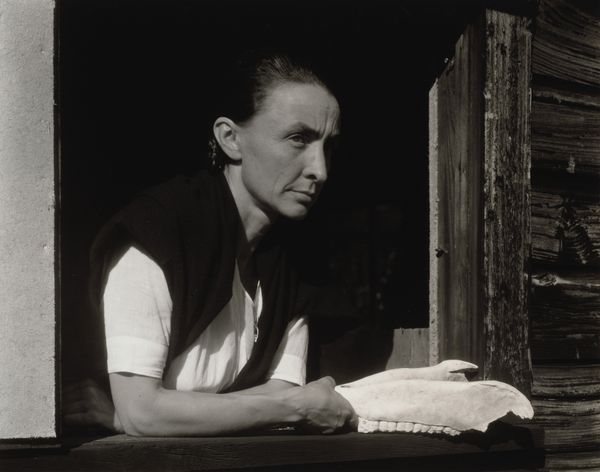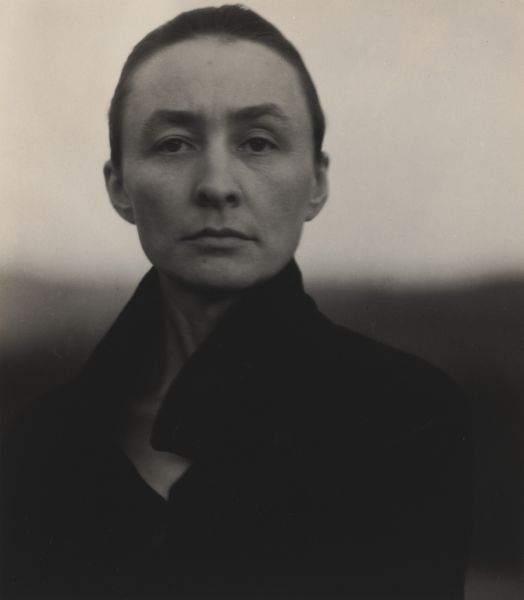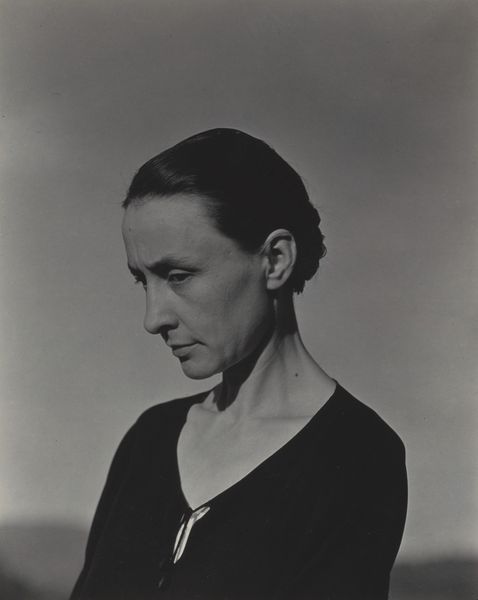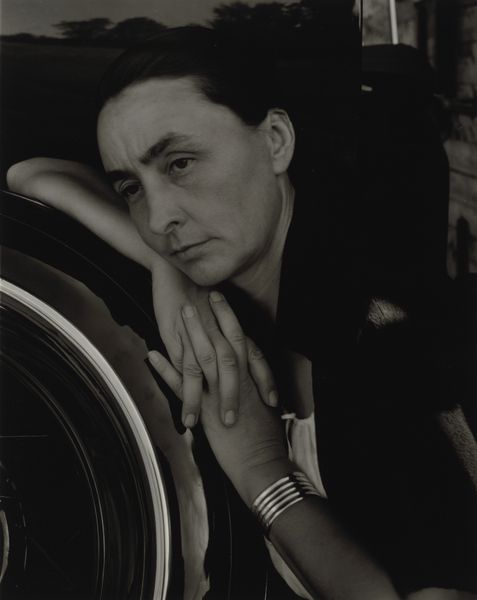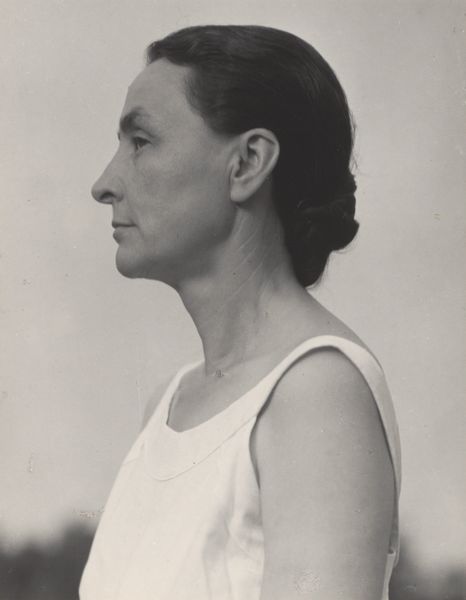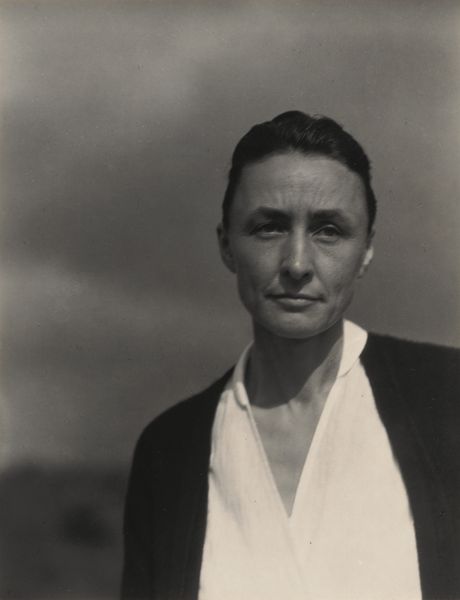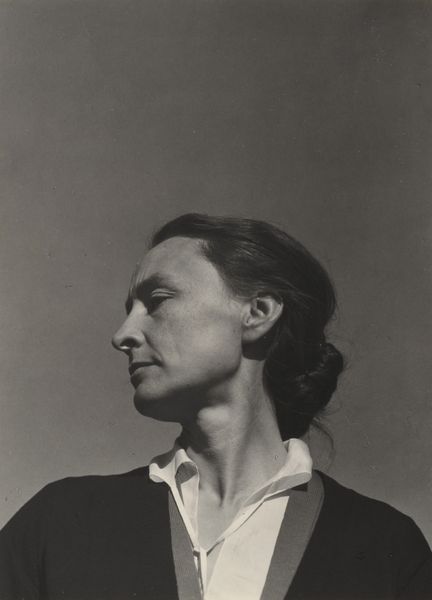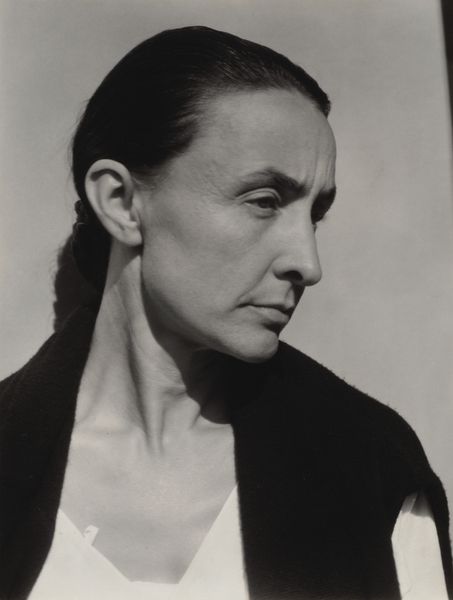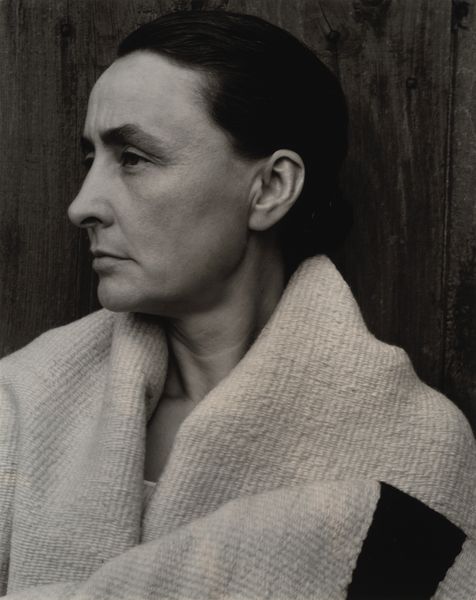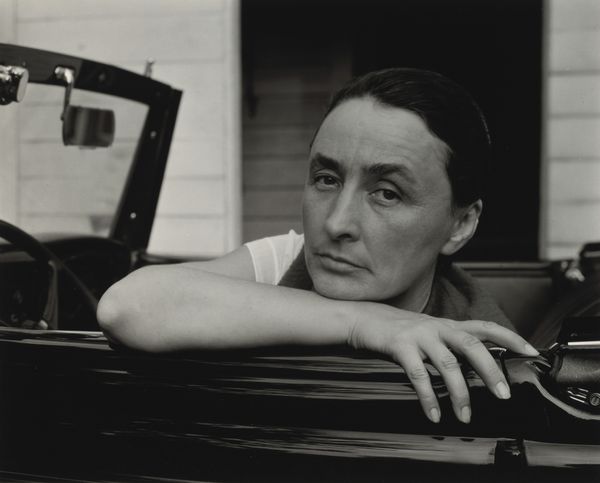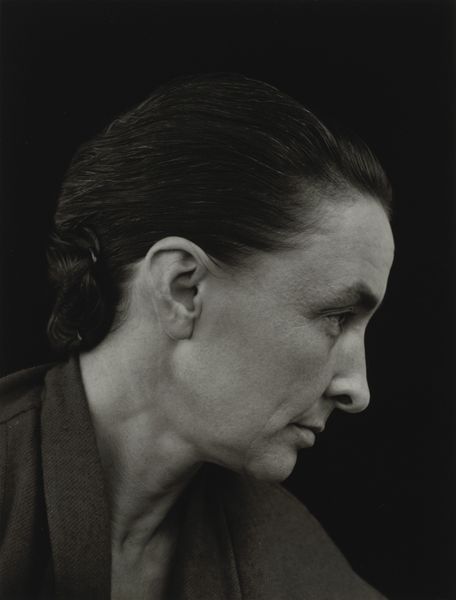
photography, gelatin-silver-print
#
portrait
#
still-life-photography
#
portrait image
#
pictorialism
#
black and white format
#
archive photography
#
photography
#
historical photography
#
black and white
#
gelatin-silver-print
#
modernism
Dimensions: sheet (trimmed to image): 11.8 x 9.2 cm (4 5/8 x 3 5/8 in.) mount: 34.8 x 27.6 cm (13 11/16 x 10 7/8 in.)
Copyright: National Gallery of Art: CC0 1.0
Curator: Alfred Stieglitz's photographs of Georgia O'Keeffe, particularly this one taken between 1929 and 1932, are powerful examples of modern portraiture executed in gelatin silver print. Editor: My initial reaction is one of introspection. The lighting, the way O’Keeffe’s gaze is directed slightly off-camera, there is a quiet strength in the image, almost a melancholic beauty. Curator: Stieglitz and O'Keeffe had a complex relationship, personally and professionally. He was instrumental in promoting her work, but also crafted her public image in ways that have been subsequently critiqued for objectifying her. These portraits cemented her status but were simultaneously filtered through Stieglitz's perspective. Editor: Absolutely. The map in the background feels significant. Is it about mapping identity, the construction of persona? O'Keeffe, through Stieglitz's lens, is presented as a subject whose own inner landscape is being explored or perhaps, subtly controlled. It also speaks to the romanticization of the American Southwest in the early 20th century. Curator: Pictorialism, the movement Stieglitz championed, prioritized artistic effect over documentary realism. These portraits aren't mere representations; they are carefully staged to convey a specific mood. Think about the influence of his gallery "291" in shaping photographic discourse! The controlled environment of his studio was designed for art production but simultaneously shaped the consumption of his artwork in his cultural sphere. Editor: Precisely. What does it mean for a woman artist to have her image crafted in this way, especially within a patriarchal art world? The photograph becomes a battleground of representation, raising important questions about agency and authorship. Her own narrative is competing with Stieglitz's. Curator: Ultimately, these portraits have undeniably contributed to both Stieglitz and O'Keeffe's legacies. Considering how her image circulates, in contrast to her self-representation as an artist, helps contextualize not just these photos, but art reception as a whole. Editor: Yes, analyzing this photo invites us to consider not only the technical brilliance, but also the complicated dance between artist, subject, and audience—how identity is performed, captured, and perpetually renegotiated within a visual economy.
Comments
No comments
Be the first to comment and join the conversation on the ultimate creative platform.
